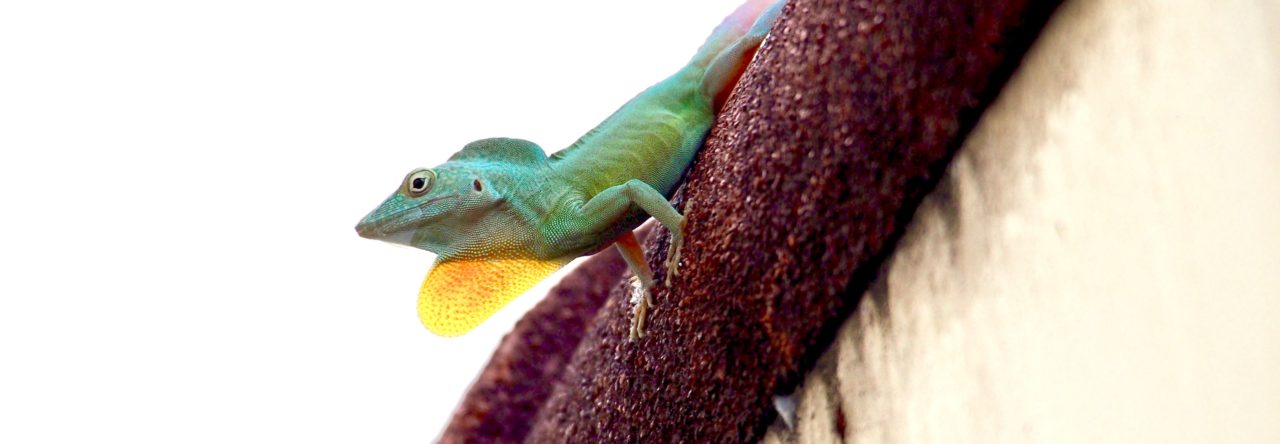This just in from the Daily Herald, the self-proclaimed leading for St. Maarten and the northeastern Caribbean:
Research ongoing on status of endemic Bearded Anole Lizard
Bearded anole with a dorsal stripe, dark bands and a turquoise spot around the eyes foraging on St. Maarten. (Joost Merjenburgh photo)
COLE BAY–Nature Foundation, in collaboration with Reptile, Amphibian and Fish Conservation Netherlands RAVON, is researching the local status of the bearded anole (Anolis pogus) lizard, also known as the Anguilla Bank bush anole.
The research is aimed to better understand the current abundance, distribution and habitat preference of the bearded anole, as presently only little data is available. The data will provide insight about the population trend of the species and are needed for its International Union for Conservation of Nature (IUCN) red-list re-assessment. With this information measures can be made to conserve and protect the species.
Merjenburgh is investigating a total of 100 80-square-metre location plots each. All bearded anole are counted and measurements are taken of tree canopy cover and habitat type. Until now the bearded anole population seems to be well distributed on the island. The bearded anole seems to be quite abundant when searching in the right habitat and is mostly absent in residential areas.
Bearded anoles have a special appearance which can differ between individuals. Some individuals have a turquoise-coloured spot around the eye, others have a dorsal stripe or dark bands across the neck and body, and some have all characteristics. The reason there is so much difference in pattern and coloration is that they use their appearance for camouflage and communication purposes.
The bearded anole can also use the dewlap, a flap of skin that hangs beneath the lower jaw, to communicate. Although both genders have a dewlap, the one on the female is usually much smaller and less colourful than the one on the male. The male extends his dewlap mainly to attract females during mating season or to confront other males when they enter his territory, explained Merjenburgh.
Their diet, like other anoles, consists mainly of small arthropods – for example, cockroaches, crickets and spiders are their favourite foods – and occasionally flowers and fruits.
This species also falls prey to predators sometimes. One of those predators is the mongoose, which is an introduced species. The mongoose eats every native reptile species on the island and is probably the reason the only native snake, the leeward island racer, has probably become extinct on St. Maarten, said Merjenburgh.
- Evolution in Real Time on Lizard Island - March 23, 2025
- Spider Snags Adult Anolis osa - March 22, 2025
- An Homage to the Green Anoles of New Orleans - March 21, 2025



James Lazell
Once upon a time, long, long ago… they were pretty common. I am very glad you are looking into the problem… Help them get common again! Thanks, Skip Lazell